“Modding for dummies? Well, some of you more experienced guitar tinkerers might be having a chuckle, but this levels the playing field”: How Gibson’s Quick Connect pickups are the Les Paul mod pretty much anyone can do – no soldering required
As Gibson finally adds some Quick Connect pickups to its Pickup Shop lineup, we revisit this simple no-solder method to mod your Modern guitar
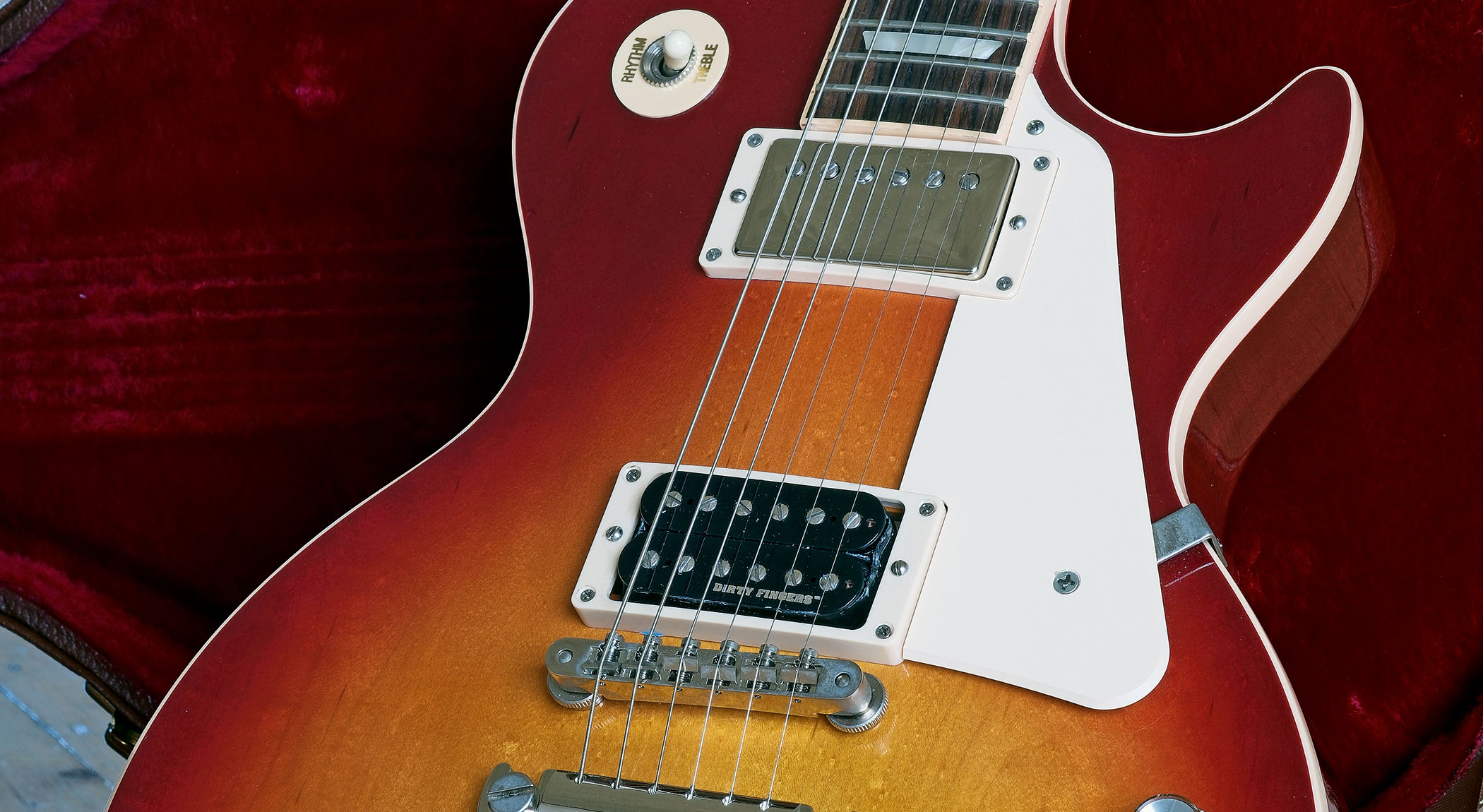
It’s hardly a “Hold the front page!” moment, but latest releases in Gibson’s expansive aftermarket Pickup Shop collection include a pair of sets – the perennial ’57 Classic and the back-to-the-70s Dirty Fingers hot humbuckers – that come with what many thought were the brand’s ‘forgotten’ Quick Connect plugs.
The what? Well, with these connectors attached to the four-conductor pickup lead, they’re a push-fit into the relevant PCB-style Gibson control circuit that can give you some tricky additional sounds.
We last discussed these quick fixes about five years ago and, to be honest, we thought that Gibson – not least under its new management – had abandoned this simple and nifty idea, at least in terms of aftermarket retrofits.
However, chatting last year to Gibson USA’s Jason Davidson, who looks after the Pickup Shop, he explained: “We still manufacture the Quick Connect [QC] stuff for Gibson USA. Gibson was actually using the QC stuff back as far as the late ’70s on different models, but we started formalising it into Gibson USA production, on regular production models, around 2007.”
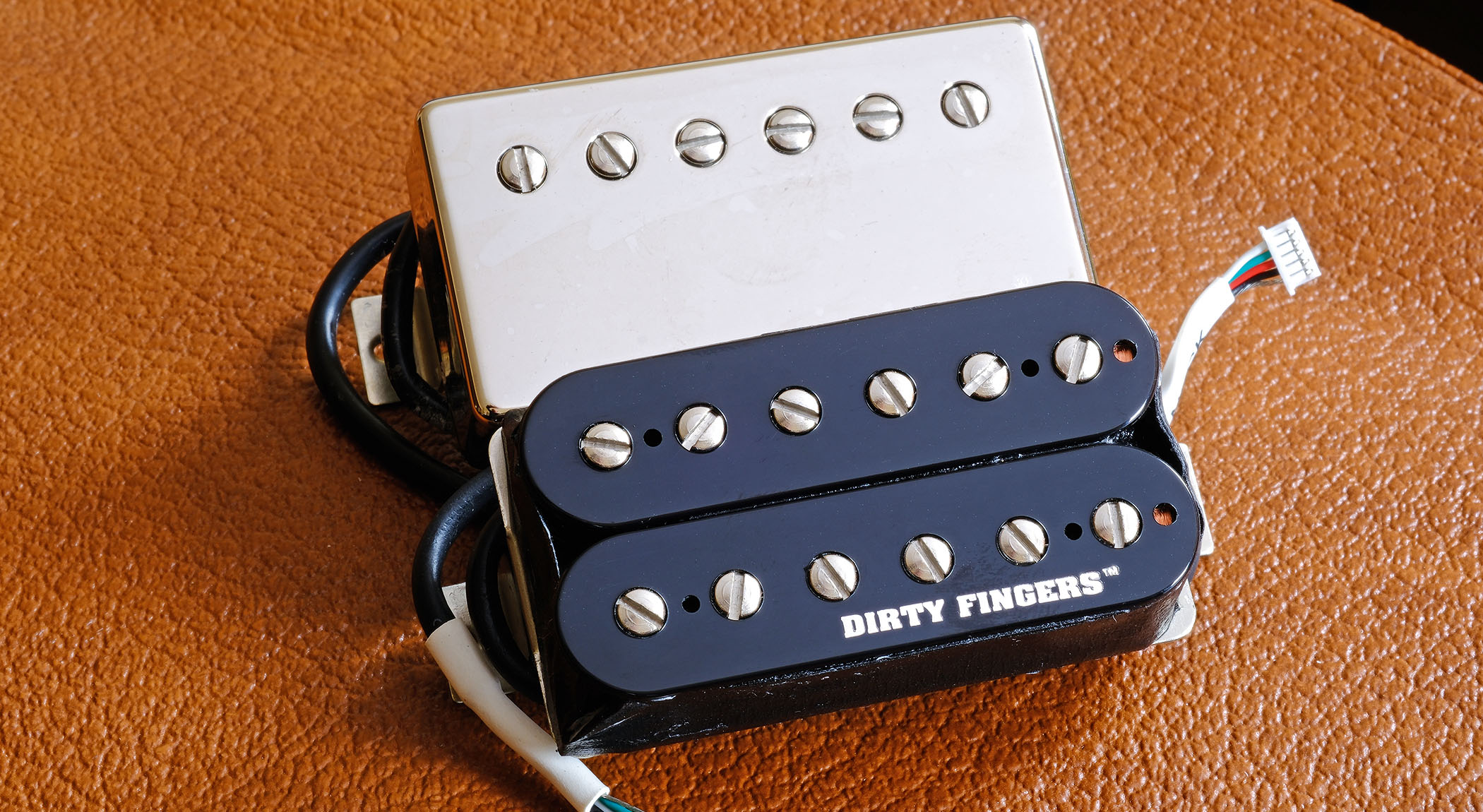
“It was around 2012 to 2013 that we did start to sell a few models aftermarket with the QC plugs, like ’57 Classics, the Angus Young model, the Dirty Fingers. We offered those with the QC system, but they didn’t actually sell very well and were discontinued shortly after.
“So, as I said, we still use Quick Connects at the factory, and since Jared Brandon – the Pickup Shop’s product manager and designer – and myself have come onboard with the Pickup Shop we’ve received a lot of requests for the Quick Connect pickups. We haven’t forgotten those customers because there are tens of thousands of guitars out there with the QC system.”
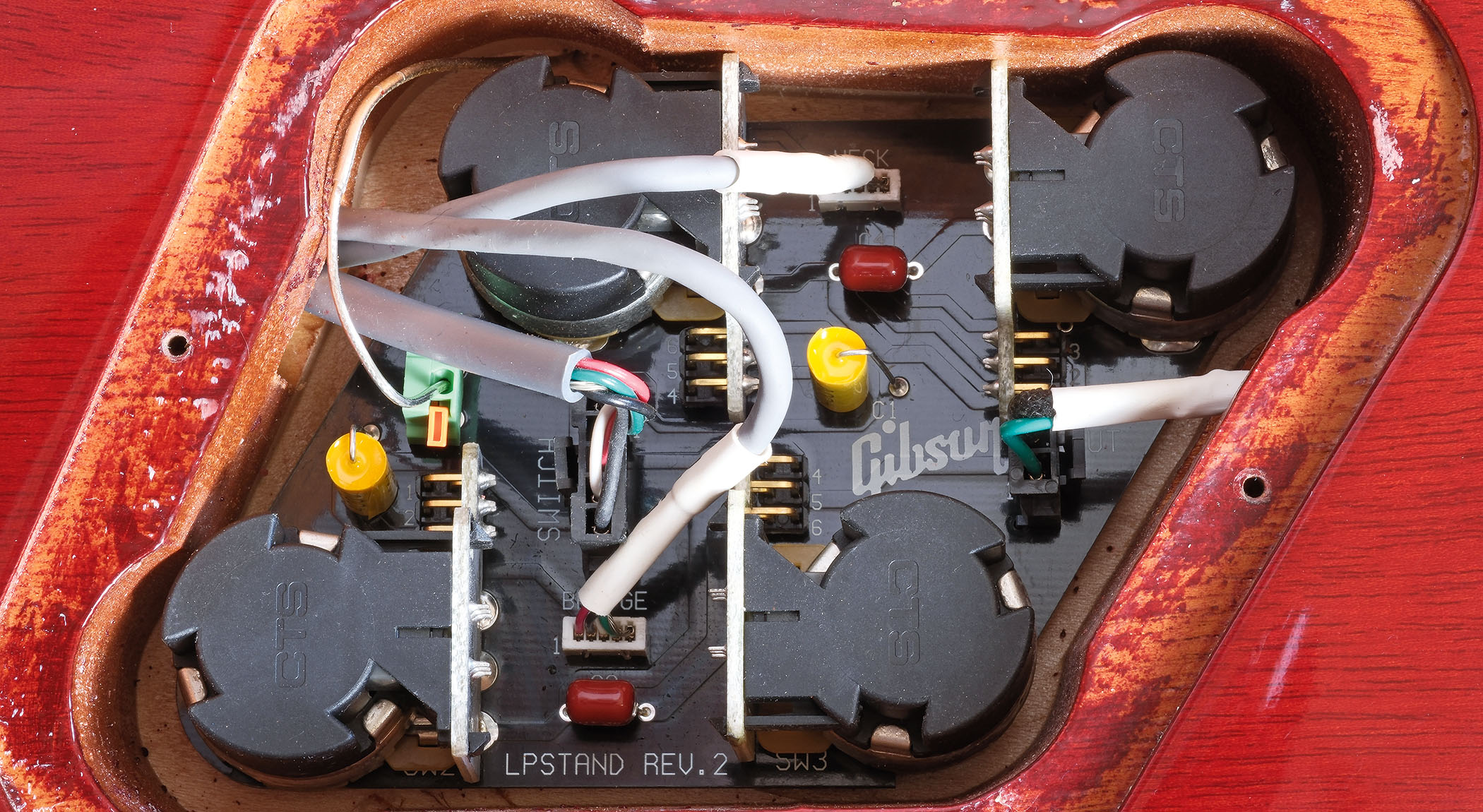
Today, it’s Gibson’s Modern instruments that use the Quick Connect/PCB system, unlike the hand-wired circuits of the Original models.
Get The Pick Newsletter
All the latest guitar news, interviews, lessons, reviews, deals and more, direct to your inbox!
The key to the multi-switching system – which is employed on all the Modern Les Pauls (with the exception of the Modern Lite) – is that the relatively complex circuit is all mounted to a pre-wired circuit board. Each of the four pull-switches uses the same vintage taper pots that Gibson developed alongside CTS with (obviously) a switch attached to each.
Pull up the bridge pickup tone control and the bridge pickup is sent directly to the output, bypassing the volume and tone controls. Pull up the neck pickup tone (with the three-way toggle selecting both pickups) and we’re out of phase with the ability to alter the pickup volumes to lessen the potentially over-thin sound.
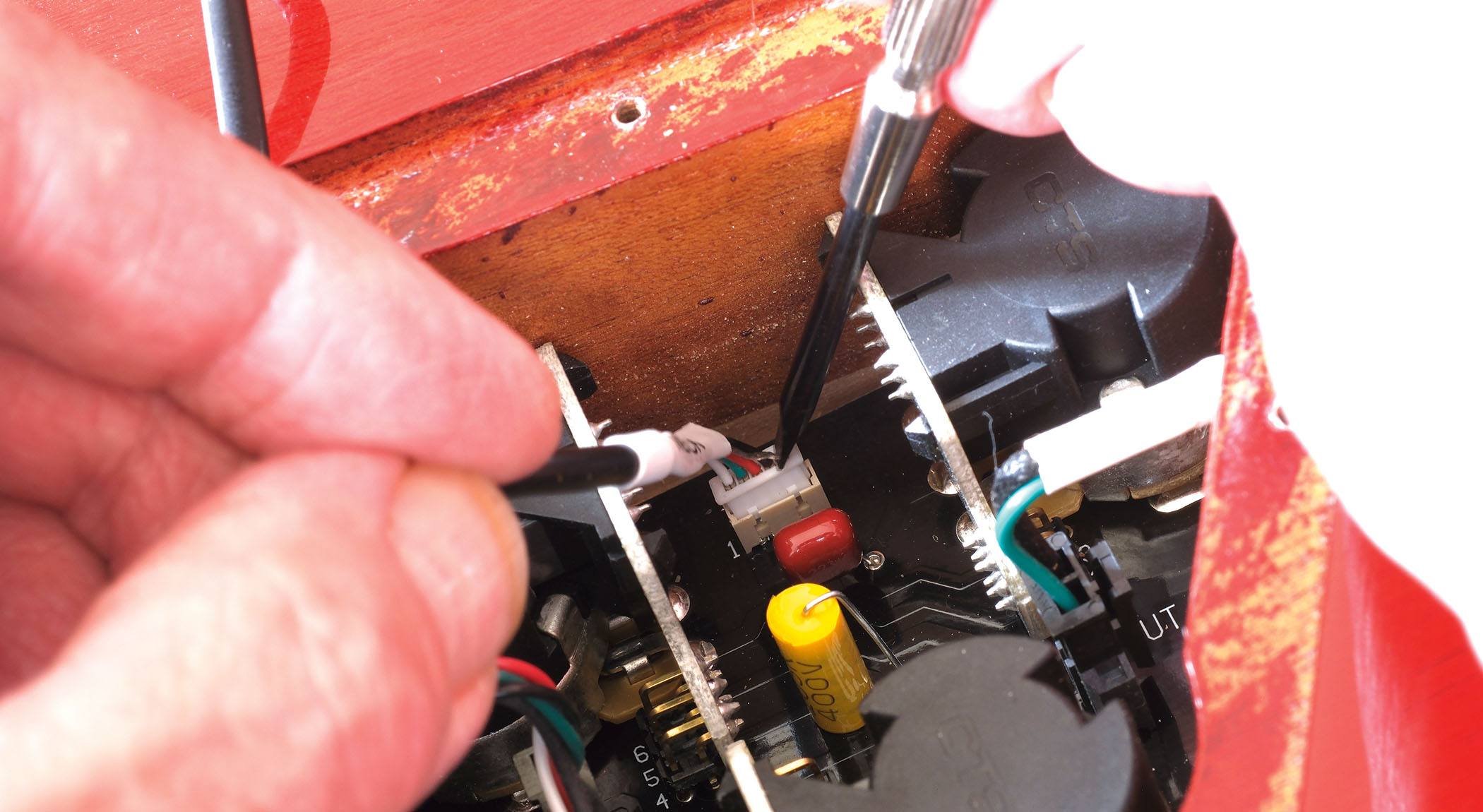
The pull switches on each volume control are a little more unusual. Gibson calls them “coil taps”, not to be confused with a single-coil pickup that is ‘tapped’ at a percentage of its winding to give a reduced output via a switch, as well as the full hotter output without the tap applied.
When you pull up the switch to tap it, it’s scooping out some frequencies to give it that fat single-coil sound without the volume drop
Jim De Cola, Gibson
Yes, one coil of the humbucker is ‘tapped’, but perhaps ‘filtered’ would be a better description because it passes through a capacitor. These coil-taps are also used on the Gibson SG Moderns, although without the direct out and out-of-phase tone control switches.
“Instead of a true coil-split, it’s a coil tap,” says Gibson master luthier Jim DeCola, who originated much of the design. “People might think of a single-coil pickup that’s tapped at, say, 70 per cent, but in this case I’m using a tap between the two coils, basically filtering it out through a capacitor, which is a tuned capacitor, and the value of the capacitor determines the frequency response of the tap.
“So when you pull up the switch to tap it, it’s scooping out some frequencies to give it that fat single-coil sound without the volume drop [of a normal coil-split]. It’s hum-reducing; it’s not fully hum-cancelling, but it’s closer to a humbucker than a single coil – a lot quieter.”

Now, if you fancy hand-wiring that lot, good luck! And that’s the genesis of the system. “[In production,] it’s more affordable,” says Jim. “If we had to do that in a hard-wired situation a lot could potentially go wrong. Using the PCB, it’s more affordable and more repeatable. There’s better shielding, too, so it’s quieter,” he concludes.
Quicker Connect
Another aspect of the system is that the other components – the output jack, toggle switch and four-conductor pickups – all connect to the PCB with simple push-in connectors. It means swapping or replacing pickups, so long as they have those Quick Connect connectors, is a simple no-solder swap.
So if you have a post-2011 PCB-equipped Gibson, you can swap out the pickups? Yes and no.
It’s a yes if you fancy trying either of these new sets, but a little frustrating that, while the Pickup Shop makes other Quick Connect pickups, they’re only available with a guitar attached – for example, those used on the Les Paul Modern Studio (490R and 498T), the Les Paul Modern Figured and Les Paul Supreme (Burstbucker Pro And Burstbucker Pro +) and the Les Paul Classic with its zebra-coiled 60s Burstbuckers (previously the ’61 Zebras).
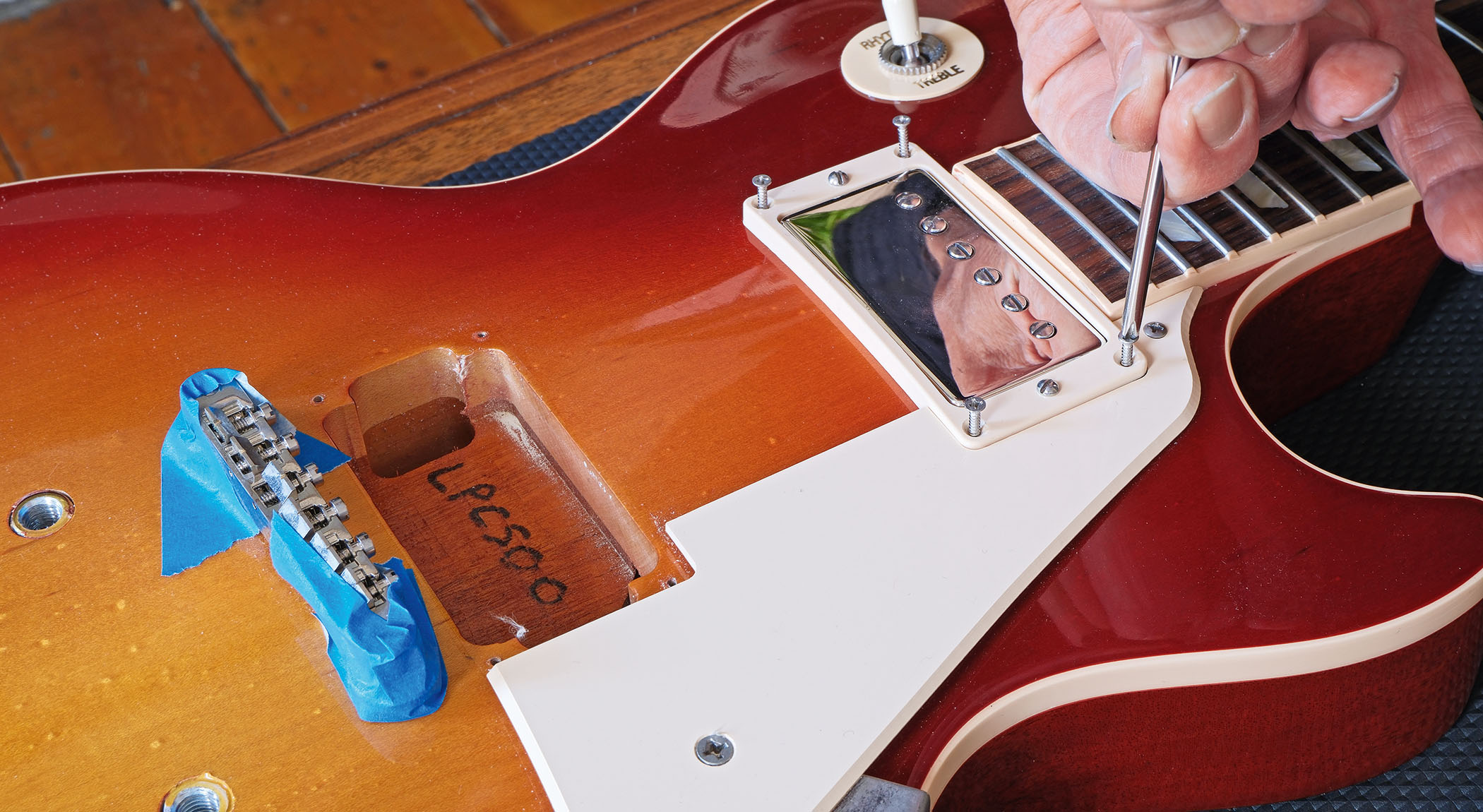
Now, not everyone is a fan of this modernist system. Many have replaced the PCB with a traditional wiring loom and stated it sounds better. I can’t comment as I haven’t done that, but in using a 2019 Les Paul Classic for gigs and recording – where its expanded sounds have proved more than useful – and as a reference for reviews, I’m a fan.
But it does mean that you’ll find some QC/PCB pickups and parts on eBay and the like. You’ll also find Quick Connect adaptors (not official Gibson parts); for the more adventurous, these means you can wire in any four-conductor pickup, and so long as you get your wiring colour codes right you can still have all the four push-switch sounds.
Some while back I swapped out the Les Paul Classic’s original ’61 Zebra Burstbuckers for an eBay-purchased Burstbucker 2 at the bridge and 1 at the neck. Jim DeCola arranged for a set of T-Types with Quick Connect plugs to be sent over from Gibson a while ago, too, so already the Les Paul Classic has had a couple of no-solder, fully reversible pickup swaps with zero problems.
Process & Sound
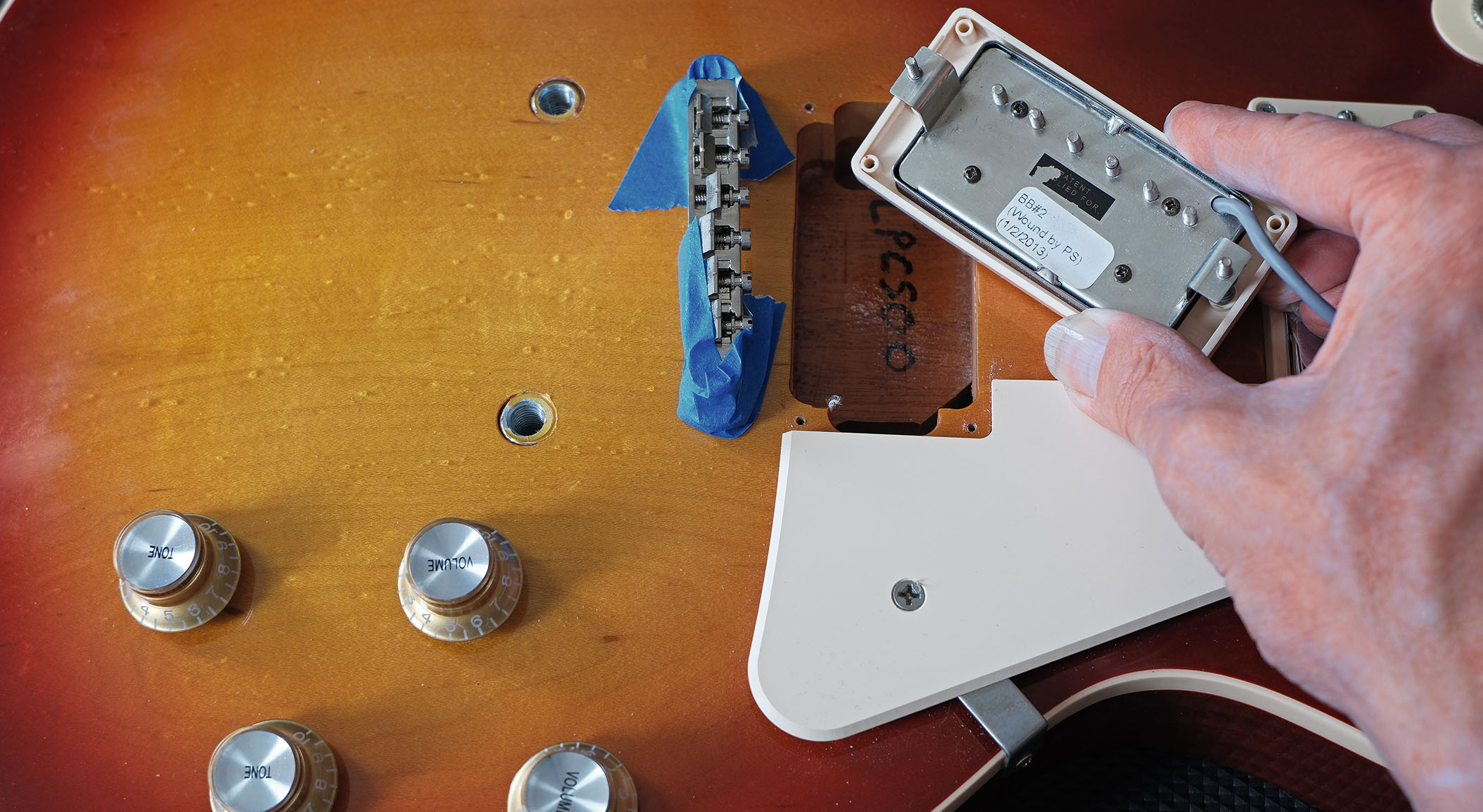
YouTube is your friend in terms of the procedure, but it’s a dead simple process, just like swapping pickups on any Les Paul, except you don’t need that soldering iron.
YouTube is your friend in terms of the procedure, but it’s a dead simple process, just like swapping pickups on any Les Paul, except you don’t need that soldering iron
It’s not as easy as the GuitarX (previously Relish) system that’s available on certain Cream T, Newman and Gordon Smith guitars, and we understand a new Maybach model, but none of those guitars has the Gibson pull-switch circuit, though most do have a simple coil-split.
So, while listening to a new pickup takes a little longer, you can tailor what you want to hear in the same way. Those original ’61 Zebras have a pretty crisp PAF-like tonality; the Burstbucker 1 and 2 combo are, to our ears, a little sweeter sounding, and are unpotted, too. But to illustrate the personalisation that’s possible, we loaded in the new Dirty Fingers in the bridge position and the ’57 Classic at the neck.
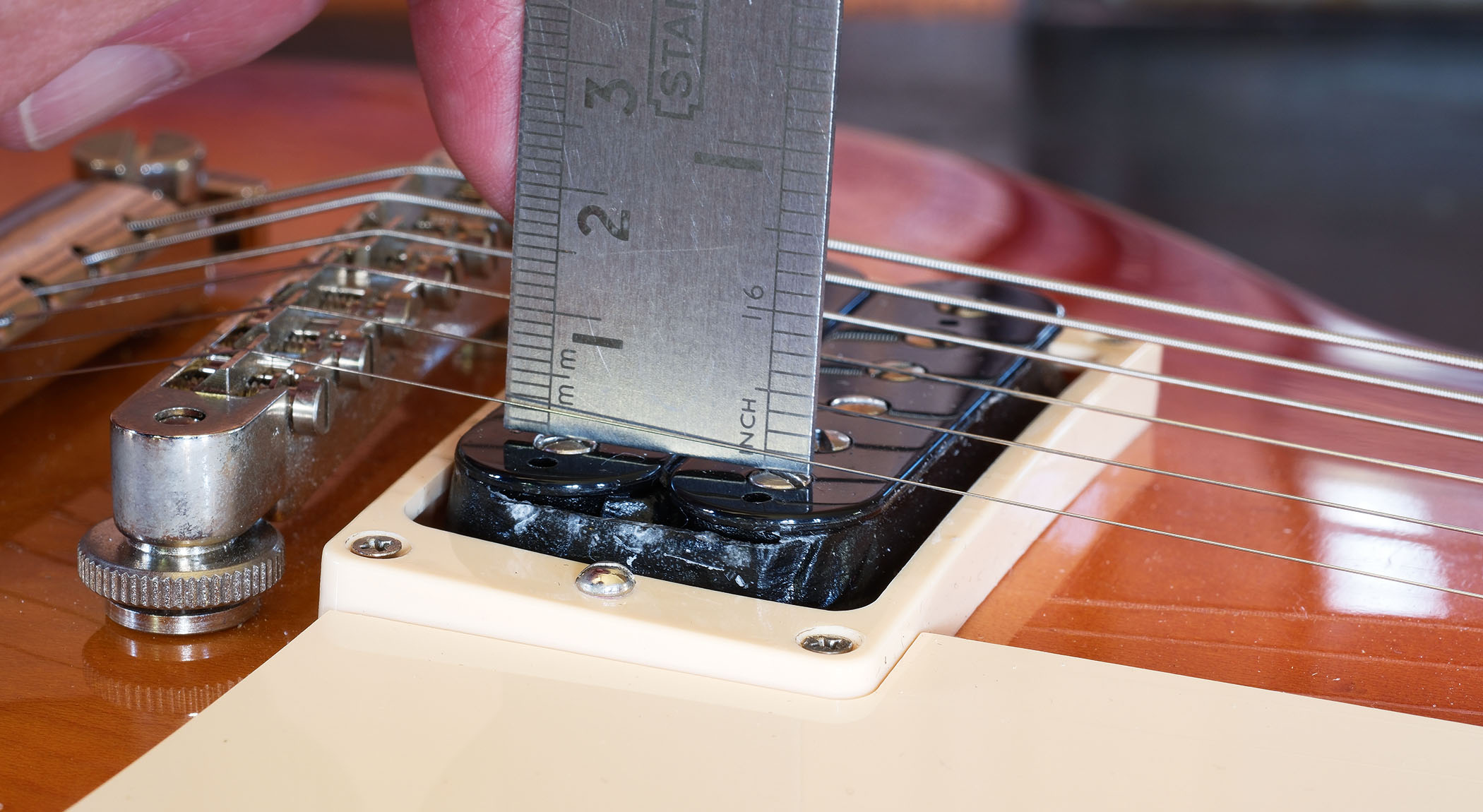
With its three ceramic magnets and DCR of around 15kohms, the Dirty Fingers was obviously Gibson’s answer to the new kid on the block Larry DiMarzio’s Super Distortion and the like.
The surprise is that coil-tap, which cleans things up a little but comes across as a rock-ready P-90
It’s a big change to our Les Paul Classic and yet you can’t help but smile as you run it into a gainy amp: there’s thickness, power and some biting clarity. The surprise is that coil-tap, which cleans things up a little but comes across as a rock-ready P-90.
The covered Alnico II ’57 Classic is very different – it’s one of Gibson’s best-selling pickups ever and is based on Seth Lover’s classic formula with balanced (as opposed to randomly wound) coils that replicate original PAFs.
There’s a rounded thickness to the voice that sings beautifully for soaring lead lines in that gained environment. We’d prefer a little more clarity for more classic jazzy blues, but as our Les Paul is now more ‘rock tool’, it all works rather well, not least with the out-of-phase switch whereby using slightly unbalanced volume settings gives some very useful gnarly midrange.
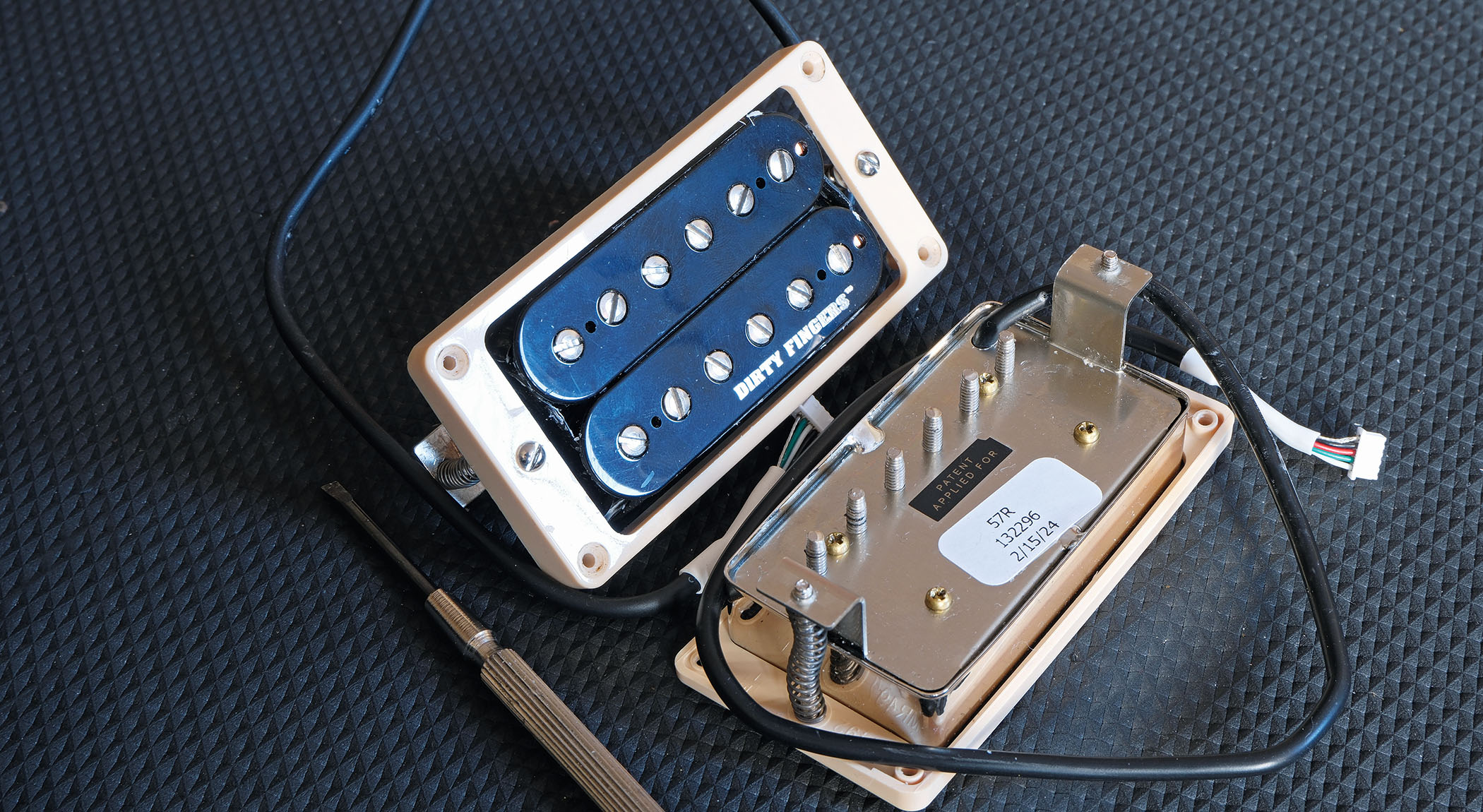
Character Building
Modding for dummies? Well, some of you more experienced guitar tinkerers might be having a chuckle, but this levels the playing field: anyone can revoice their instrument while retaining some pretty tricky wiring options from those four pull-switches.
You also might simply prefer the open-coil or pickup covers to change the look of your guitar. Whatever, the combo of expanded sounds and aesthetics is just a Gibson Modern and a screwdriver away. No soldering necessary!
Specs
Gibson Dirty Fingers Quick Connect
- PRICE: Treble and Rhythm $129/£119 each
- ORIGIN: USA
- TYPE: High-output uncovered humbucker
- MOUNTING TYPE: Standard humbucking
- POLE PIECE SPACING/STYLE: 49mm/dual screw coils
- MAGNET TYPE: 3x ceramic
- COIL WIRE/WIND: N/A
- POTTING: Yes
- DCR (kohms): 15 (Treble and Rhythm)
- OPTIONS: Available with standard 4-conductor hook-up cable with zebra coils. New SM version uses single Ceramic 8 magnet
Gibson ’57 Classic Quick Connect
- PRICE: Treble and Rhythm $169/£149 each
- ORIGIN: USA
- TYPE: Classic-output covered humbucker
- MOUNTING TYPE: Standard humbucking
- POLE PIECE SPACING/STYLE: 49mm/screw and slug coils
- MAGNET TYPE: 1x Alnico II
- COIL WIRE/WIND: N/A
- POTTING: Yes
- DCR (k ohms): 7.8 (Treble and Rhythm)
- OPTIONS: Uncovered versions available including double classic white, plus underwound versions all with vintage 2-conductor cable
- CONTACT: Gibson

Dave Burrluck is one of the world’s most experienced guitar journalists, who started writing back in the '80s for International Musician and Recording World, co-founded The Guitar Magazine and has been the Gear Reviews Editor of Guitarist magazine for the past two decades. Along the way, Dave has been the sole author of The PRS Guitar Book and The Player's Guide to Guitar Maintenance as well as contributing to numerous other books on the electric guitar. Dave is an active gigging and recording musician and still finds time to make, repair and mod guitars, not least for Guitarist’s The Mod Squad.
“Classic aesthetics with cutting-edge technology”: Are Seymour Duncan's new Jazzmaster Silencers the ultimate Jazzmaster pickups?
“We’re all looking for new inspiration. Some of us have been playing humbuckers for a long, long time”: Are we witnessing a P-90 renaissance? Warren Haynes has his say










